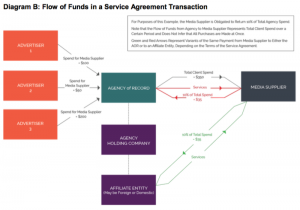
Still not sure whether your business should be out there blogging? Check out this list of blogging stats we curated for you.
Blogging & Lead Generation
1. Businesses using blogs are known to generate 67% more leads. (Source)
2. Firms that lack online lead generation strategy are said to grow four times slower than those that generate at least 40% of their leads online. (Source)
3. 92% of bloggers who posted multiple times on a daily basis were successful in acquiring a customer via their blog. This figure is as low as 66% for those blogging on a monthly basis and 43% for bloggers who created a post less often than once in a month. (Source)
4. Content production is so great today that 60 to 70% of content marketing remains unused – an indication of the need to revolutionize the content turnover for B2B organizations. (Source)
5. 83% of B2B marketers prioritize focusing on lead quality rather than quantity. (Source)
6. 25.1% of HubSpot users attribute an increase in traffic to blogging activities. (Source)
7. Up to 78% of enterprise marketers think that their team is very or even extremely effective in storytelling. (Source)
8. 37% of B2B marketers consider time one of the biggest challenges for effective content production. (Source)
9. 85% of B2B marketers pointed out that lead generation is of the utmost importance for content marketing. (Source)
10. 68% of customer respondents at HubSpot say they began generating better quality leads since using the service. (Source)
11. 83% of HubSpot users had an increase in the conversion rate of leads to their customers. (Source)
12. 32% of marketers feel they are either sophisticated or mature with content marketing. (Source)
Blogging & Customer Acquisition
13. In 2014, the average online conversion rate amounted to 2.95%. (Source)
14. 81% of marketers face challenges achieving a single customer view. (Source)
15. Social shares and unique visits are the most valuable key performance indicators (KPIs): 24% and 23% of SEO experts, respectively, mentioned their profound importance. (Source)
16. 70% of marketers agree that it’s cheaper to retain than acquire a customer. (Source)
17. 44% of companies put more effort in customer acquisition than customer retention, while 40% treat both with equal effort. (Source)
18. 38% of marketers confess that knowing the needs and attitudes of their customers represents one of the biggest challenges for them. (Source) Image Credit: Experian
19. Overall, customer acquisition tends to move towards rising costs: 31% rising, 54% steady and 16% falling. (Source)
20. 80% of SaleCycle’s B2B content marketing failed due to paying attention to the number of blogs rather than to their impact. (Source)
21. In order to achieve a complete view of the customer, 56% of marketers aim at increasing customer retention. (Source) Image Credit: Experian
22. 94% of bloggers choose Social Media Marketing as their promotion tactic. (Source)
23. Approximately 20% of bloggers rarely or never check the Analytics of their blog. (Source)
24. Only 41% of marketers are sure that they can adequately measure their social media ROI. (Source)
25. Normally, 8 out of 10 people won’t read more than headlines, while only 2 out of 10 will read a blog to the end. (Source)
26. 86% of social marketers use Facebook ads, whereas no more than 18% use Twitter ads. (Source)
27. 62% of B2B marketers work on their mobile-optimized blog, in comparison to 51% of B2C marketers. (Source)
Blogging & Sales
28. In comparison to an article without images, the one containing photos, drawings and/or other types of images could have 94% more views. (Source)
29. 67% of consumers claim that the quality of images used in an article or product review makes a considerable influence on their desire to buy that product. (Source)
30. Notwithstanding the fact they earn less than the 40 to 50-year-olds, the Millennials (18 to 34 year old age group) contribute the most to online sales: the average annual spending per user amounts to $ 2000. (Source)
31. 14.5% of users favoring e-shopping find blog reviews the most convincing basis for making a purchase. (Source)
32. On average, asking for a phone number decreases conversions by 5%, while using the word ‘submit’ results in conversions decreased by 3%. (Source)
33. Changing right aligned labels to left aligned (and thus increasing readability) may result in a 24.6% jump in conversions. (Source)
34. It’s possible to increase conversions by 120% by simply changing the format of infographic highlights from 11 fields down to 4. (Source)
35. Only 17% of automotive blogs were effective enough to convince their visitors to buy a specific vehicle, compared to 26% of successfully selling brand websites. (Source)
36. 96% of customer respondents think that HubSpot has helped them succeed in their marketing goals. (Source)
37. Only 10% of e-shoppers today prefer using desktop computers during a store visit as opposed to 26% in 2013. (Source)
38. 73% of customers name free shipping the most important factor for their satisfaction (although, many are still willing to pay for premium delivery). (Source)
39. Utilizing blogging was one of key parts of most marketers’ plans in 2016 – 66%, as opposed to those aiming at increasing their use of podcasting, visuals, video and live video (26%, 71%, 73% and 39%, respectively). (Source)
40. 54% of marketers in 2016 have a mobile-optimized blog, which is apparently different from 2015 (50%) and 2014 (43%). (Source)
41. Good news for those marketers who have chosen to prioritize blogging: they are 13x more likely to enjoy a positive marketing ROI. (Source)
42. As many as 63% of marketers are using social media for at least 6 hours per week, while 39% of them delve into social media for 11 or even more hours weekly. (Source)
43. The 2015 estimate has it as follows: 69.7% of bloggers are completely ready to accept monetary compensation per post. Apparently, as influencer marketing continues growing, brands are becoming even more concerned with finding and vetting individual bloggers. (Source)
44. Blogs and their share in cross-platform marketing: Nick Bianchi says that the conversation generated around his #RoadTripATT campaign was amounted to 37 million impressions and 145,000 engagements, while an extra makeweight of 2.7 million impressions and 137,000 engagements was provided by the bloggers and Instagram influencers. (Source)
45. Blogging is used by most marketers (68%) on par with visual and video assets of social media marketing. (Source)
46. In general, 60% of digital shoppers feel more positive about a company after getting acquainted with its website and/or blog reviews. (Source)
47. 68% of marketers use social media to obtain loyal fans, and 66% to gain marketplace intelligence. (Source)
48. 72% of HubSpot customers claimed to experience an increase in sales revenue within one year. (Source)
Blogging Facts & Findings
49. 54% of bloggers spend no more than 2 hours on a blog post. (Source)
50. 64% of people say that the need to inform friends is the most important for them when posting or sharing content. (Source)
51. 50.4% of bloggers choose to write during business hours, while 48.1% of them prefer to write at night. 8% of bloggers work on their writing all the time. (Source)
52. 41% of consumers press the ‘Like’ button on Facebook for discounts and promotions. (Source)
53. An absolute majority of bloggers (81.4%) create content at home, and as many as 19.1% prefer coffee shops for blogging. (Source)
54. 69% of internet users unsubscribe from mailing lists due to receiving too many emails. (Source)
55. 54% of bloggers create posts at least once per week; 1.4% produce more than one post per day. (Source)
56. 82% still prefer accessing Facebook from their PCs, and only 15% opt for a mobile device. (Source)
57. 72.9% of bloggers decide to edit their work on their own and only 11.8% of them involve a professional editor. (Source)
Blogging Around The World
58. Internet has grown even more popular in Spain: the amount of Spanish users using Internet daily jumped from 83.1% in 2015 to 96.2% in 2016. Most importantly, blogs remain one of the most often accessed web-pages – as many as 71.6% of PC users visit them on a regular basis. (Source)
59. According to the data from the American Association for the Advancement of Science (AAAS), approximately 47% of scientists employ social media to share or propagate news regarding scientific developments, whereas at least 24% of all the scientists choose blogging in particular. (Source)
60. Striving to develop and improve digital marketing tactics, 64% of Australian B2B marketers remain involved in creating and publishing content for blogs. (Source)
61. As for the United States, there were 49% of B2B marketers claiming that blogging is the most important form of content for their business, while only 33% of B2C marketers said the same was true for them.(Source)
62. Just like 49% of US Xers (Gen X), 61% of Millennials (Gen Y) are interested in seeking discounts and mobile coupons on blogs rather than in newspapers. (Source)
63. Today’s China demonstrates somewhat improved trust levels to digital sources of information: 41% of Chinese opt for blogs, while up to 50% continue sticking to newspapers and magazines. (Source)
64. Social media consumption in the US has reached 61% on smartphones, according to the December “2016 US Cross-Platform Future in Focus” report. (Source)
65. There are triple the Millennial Democrats who have a Tumblr account, if compared to Millennial Republicans. (Source)
66. Indian e-buyers are beginning to find blogs more important: social media and blog trust increased up to 11% in 2016 as compared to 5% in 2014. (Source)
67. In Latin America, Blogger was second only to Facebook in terms of users’ attendance in December 2015: 61.2 million users against 140.6. Twitter took 4th place with its 18.3 million users. (Source)
68. In the US, the length of a typical blog post is 900 words in 2016 – which is 10% longer than in 2014. (Source)
69. Every fifth US digital shopper claims to have bought a product after reading a review or blog post. (Source)
70. 70% of Chinese shoppers mentioned blogs as their preferred source of fashion information. (Source)
71. In Germany, the use of in-house blogs will have increased from 27 to 40% by the end of 2016. (Source)
Blogging and Communication
72. No less than 10% of all internet users participate in commenting and discussing forums using the blogging website Tumblr. At the same time, 15% of users prefer Digg, reddit or Slashdot for such purposes. (Source)
73. 73% of people on the Internet stay connected feeling that it’s their only way to be in touch with others who share their interests. (Source)
74. 85% of internet users think that the most helpful thing for processing and understanding information is reading other people’s responses. (Source)
75. Similarly, 73% of internet surfers believe that the processing of information and the acquisition of knowledge is deeper when they are involved in the process of sharing that information/knowledge. (Source)
76. Phone-based communication has been considered by far the most popular choice of as many as 80% of teenagers, while only 4% of respondents have pointed out blogging sites as a common way of getting in touch with friends. (Source)
77. In 2015, as many as 71% of journalist and academic projects that were successfully crowdfunded either by Kickstarter or schools were produced via blogging by individuals. (Source)
Digital & Social Articles on Business 2 Community(111)
Report Post







































